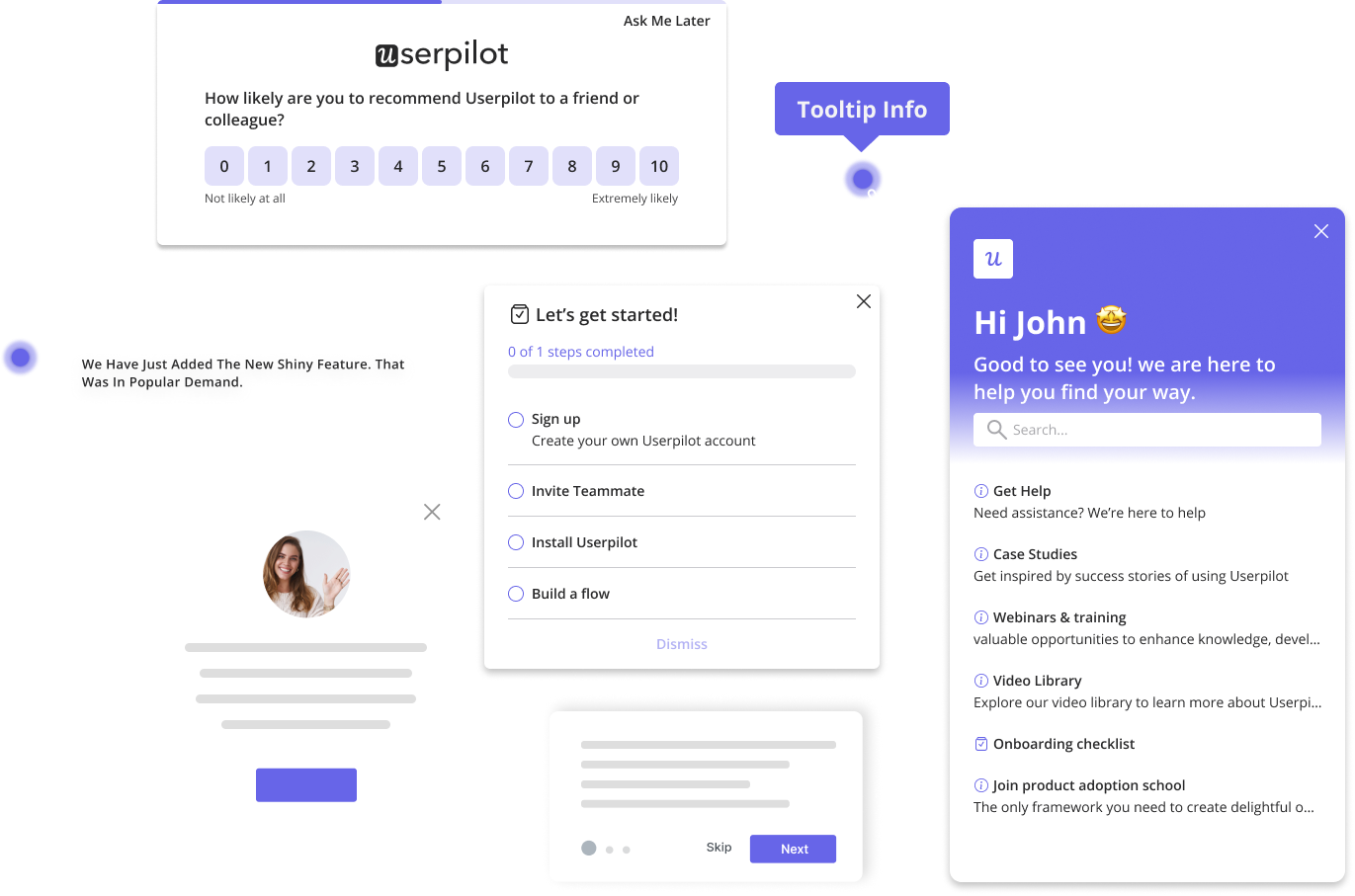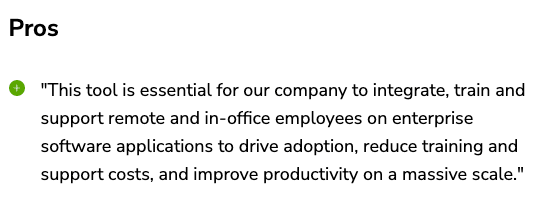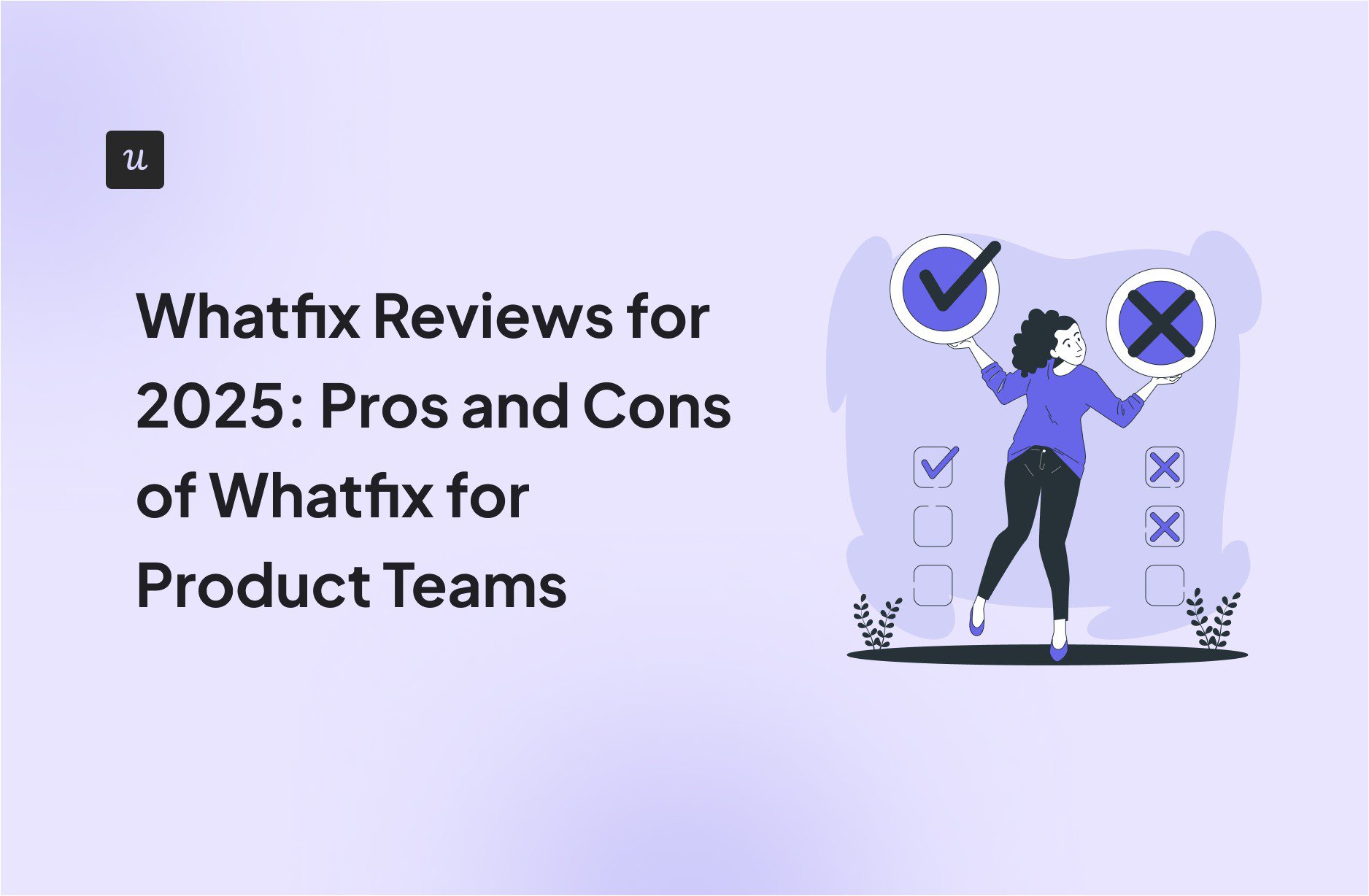
Whatfix is a powerful, enterprise-grade digital adoption platform (DAP) highly capable of delivering complex in-app guidance for large organizations. However, its significant cost, technical complexity, and opaque pricing often make it a challenging fit for agile product teams and companies seeking rapid, independent implementation.
As a product manager, I constantly evaluate tools designed to improve user experience and boost product stickiness. For this review, I thoroughly analyzed Whatfix, assessing its key offerings, strengths, weaknesses, and real-world applicability.
Researching Whatfix Reviews? Find Your Best Fit.
What’s your biggest challenge with your current digital adoption tool (or tools you’re reviewing, like Whatfix)?
Got it. That’s a common frustration. So, what’s your team’s #1 priority right now?
You need an all-in-one platform built for product teams.
Stop evaluating fragmented tools. Userpilot combines powerful, no-code in-app experiences, deep-dive analytics, and user feedback—all in one place with transparent pricing.
Try Userpilot Now
See Why 1,000+ Teams Choose Userpilot
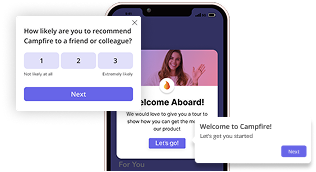
Understanding Whatfix: Core offerings and functionality
Whatfix is a comprehensive digital adoption solution designed to help users maximize their use of software applications by providing contextual guidance. It functions as an overlay on existing software, offering interactive help directly within the application.
Whatfix is comprised of three distinct offerings:
- Whatfix Digital Adoption Platform (DAP): This is the primary tool, providing features like in-app flows, checklists, and tooltips to guide users through the software. It’s explicitly designed to improve onboarding, engagement, and support.

- Whatfix Product Analytics: This component offers advanced tools for understanding user behavior. However, Whatfix prices product analytics separately. Based on current user reviews, this separation means you’ll need to budget for analytics as an add-on rather than getting it bundled with your core platform subscription.
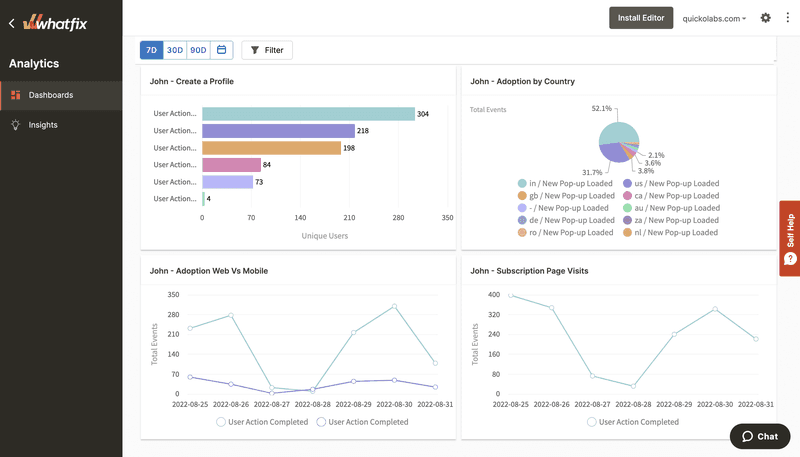
- Whatfix Mirror: This unique tool enables the creation of interactive sandbox environments, ideal for employee onboarding and training content without impacting live data. It automatically captures screen workflows and converts them into editable, clickable demos that users can practice with in a risk-free setting.
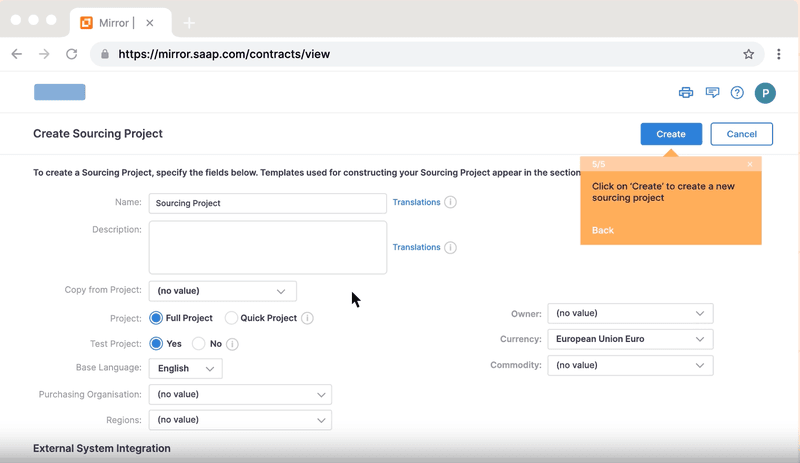
Whatfix helps companies create better user experiences across these solutions, whether for onboarding new hires, simplifying complex software, or understanding user interactions.
Whatfix’s strengths: Key advantages for product growth
Here are the key strengths of Whatfix most commonly mentioned across customer reviews:
Delivering interactive guidance and contextual support
Whatfix offers interactive step-by-step guides, contextual tooltips, pop-ups, and overlays. This kind of in-app guidance is vital for reducing user friction and accelerating new user activation.
Beyond customer-facing applications, Whatfix also includes employee onboarding capabilities, helping organizations train employees on enterprise software without spending hours on live sessions.
As one user review affirmed, “This tool is essential for our company to integrate, train, and support remote and in-office employees on enterprise software applications to drive adoption, reduce training and support costs, and improve productivity on a massive scale.”
Robust product analytics
Understanding user behavior is a non-negotiable for any product manager. Whatfix’s dedication to powerful analytics, even offering it as a separate product, underscores its strength in tracking product performance.
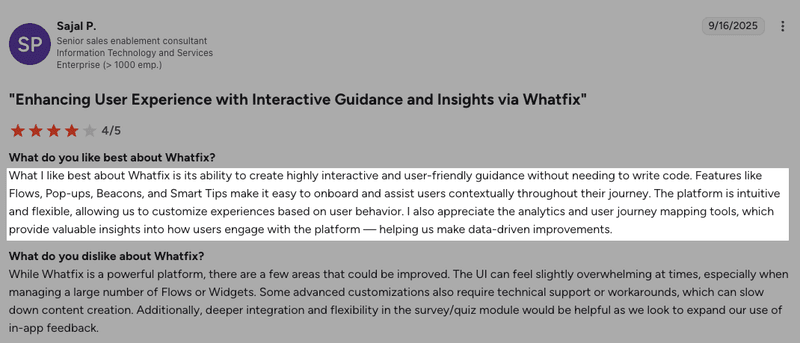
It features capabilities for flow diagnostics, deep product analytics, and real-time guidance. Knowing precisely what users do within your application is critical for making data-driven decisions. Tools that provide product analytics can reveal exactly where users succeed and where they encounter difficulties.
A+ customer support and enterprise readiness
For larger organizations, Whatfix can handle substantial scalability and support demands.
Multiple Whatfix reviews commend its ability to integrate with various enterprise software and highlight its responsive customer service team. Users consistently describe the support team as “responsive,” “helpful,” and often resolving issues “almost instantly.”
When deploying a DAP across numerous teams and systems, dependable customer success best practices and robust support are critical for successful implementation.
Ease of use and intuitive interface
Whatfix is also quite easy to use and intuitive. This ease means marketing teams, customer success managers, and other non-technical stakeholders can build standard onboarding experiences independently once the platform is properly configured.
Users consistently praise Whatfix’s features as user-friendly, with the configuration described as “incredibly easy to use.”
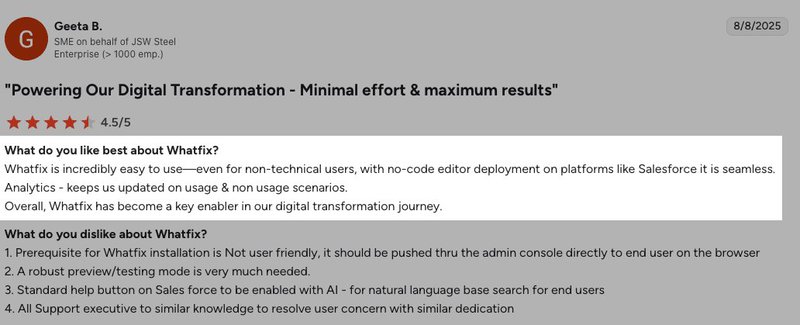
Whatfix’s shortcomings: Critical considerations for product teams
While Whatfix presents strong advantages, my review also revealed several areas that would give me considerable pause as a product manager, particularly concerning cost and team independence.
Opaque pricing and budgeting challenges
Whatfix pricing details are not shared publicly. You need to contact their sales team for a quote. According to Vendr, a company that independently does contract negotiations, the average annual cost hovers around $31,950, with starting prices frequently exceeding $1,000 per month.

While a sales-led approach is common for enterprise solutions, it remains a significant hurdle for teams accustomed to transparent SaaS pricing, particularly those with tighter budgets and a need for clear ROI assessment.
For customer-facing apps, pricing is based on monthly active users (MAUs). The Standard plan limits you to just 2 integrations and caps resource center articles at 2,000, forcing upgrades for growing teams.
The Whatfix pricing structure adds complexity. Whatfix charges per application, per user type, and locks essential features behind higher tiers. You’ll pay separately for each of their three products (DAP, Product Analytics, and Mirror).

Steep learning curve and technical dependency
While Whatfix’s builder is intuitive for basic flows, creating sophisticated experiences requires technical expertise, especially in CSS and JavaScript, to fully use the features. Multiple users report a “steep learning curve.” This is far from ideal for agile product development.
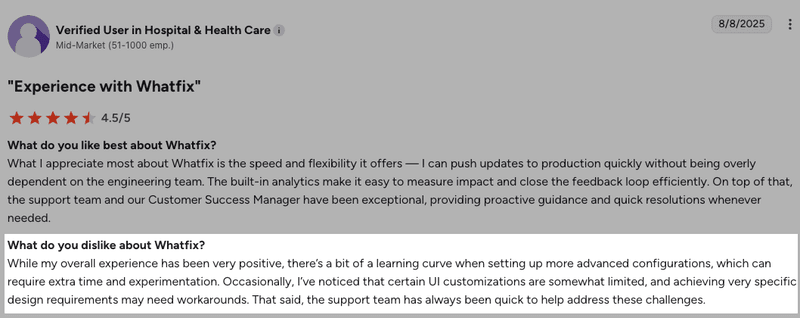
Such complexity means product teams must involve their engineering team for initial setup and advanced customization, inevitably causing delays and increasing the customer onboarding cost.
Maintenance and compatibility issues
Another significant concern I observed is the potential for ongoing maintenance burdens. Users report that content can “get heavy as more content and materials pile up,” and UI changes in the host application frequently require rebuilding in-app flows from scratch.

Additionally, despite offering multi-platform support, some users reported compatibility issues, necessitating manual troubleshooting to rearrange content.
This indicates that maintaining a smooth experience across diverse applications and operating systems is more challenging than it appears, leading to unexpected effort and potential software bugs or inconsistent user experiences.
Underdeveloped features and UI
Whatfix often prioritizes announcing new features over improving existing ones, leading to underdeveloped features. This phenomenon, known as feature bloat, can create a confusing user experience where functionality is broad but shallow. While its plugin receives praise, the overall platform UI and dashboards are frequently described as “confusing and difficult to navigate.”
And even though UI complexity can be subjective or reflect powerful capabilities, in Whatfix’s case, a cluttered or non-intuitive interface undeniably hinders a team’s ability to quickly gain insights and build effective experiences. This ultimately results in bad UX examples for the internal teams attempting to use the product effectively.
Userpilot: A more accessible digital adoption solution
Whatfix comes with an unintuitive UI, lengthy implementation cycles stretching 1-3 months, opaque pricing that requires sales negotiations, and separate products for core features like analytics.
If you’re a product manager like me, who needs to move quickly and iterate independently, these friction points can become real operational challenges.
Userpilot solves these problems. It’s an all-in-one platform purpose-built for product teams who need robust user engagement capabilities without the technical overhead. Unlike Whatfix’s fragmented product suite, Userpilot delivers advanced analytics, comprehensive in-app experiences, native mobile engagement, and email campaigns in a single platform, all with transparent pricing.
Let’s look into the individual features in more detail.
Drag-and-drop flow builder for maximum customizability
Userpilot’s truly no-code onboarding builder means product managers, customer success teams, and growth marketers can create sophisticated in-app experiences without engineering support. Also, unlike Whatfix, where advanced features often require developer involvement, Userpilot’s interface is designed for non-technical users while still offering powerful capabilities.
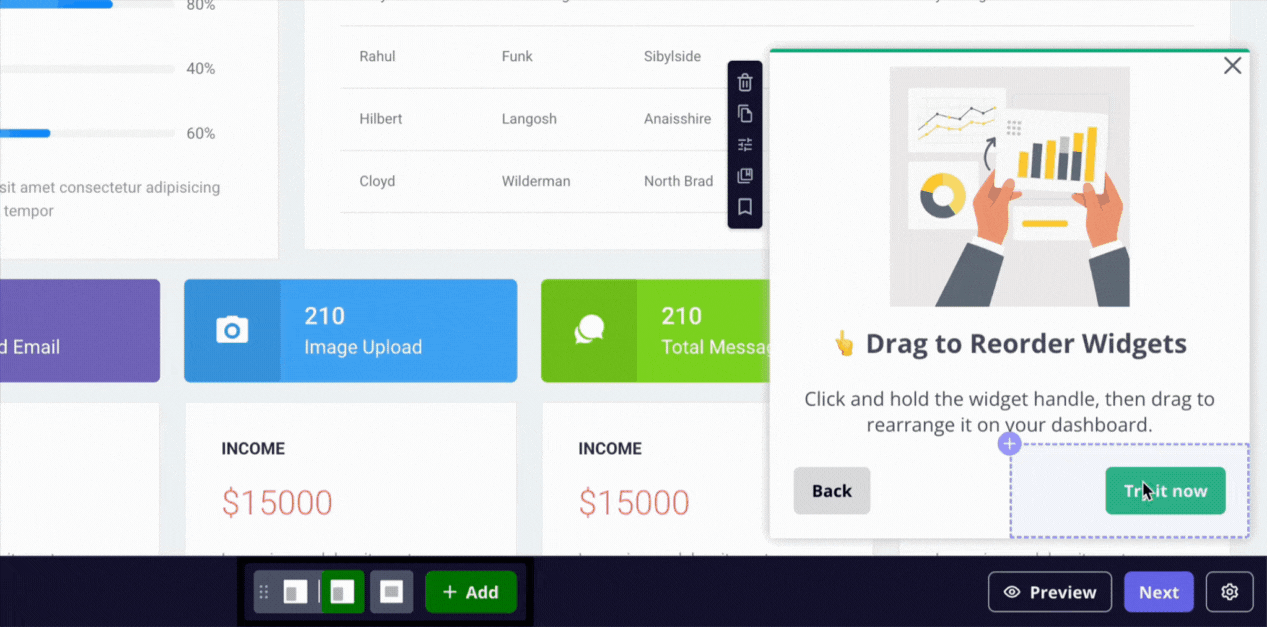
The visual builder allows you to drag and drop elements directly onto your live application, providing an immediate, accurate preview of the user experience. This simplicity allows us to focus on strategy and content rather than getting bogged down in code.
Comprehensive, omnichannel user onboarding and engagement
Userpilot offers a full suite of no-code features to engage users throughout their journey:
- Interactive walkthroughs and checklists: We build engaging interactive onboarding flows with tooltips, modals, and slideouts. These guides drive users to their “Aha!” moments faster. For example, creating a flow to introduce new features or utilizing an onboarding checklist template to guide users through initial setup can significantly boost activation. We’ve even observed how checklists can triple conversions, as highlighted in the Sked Social case study.
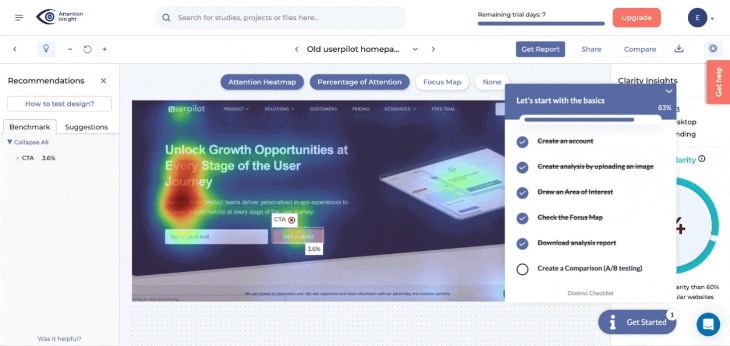
- In-app surveys: Gathering in-app feedback is critical for continuous improvement. Userpilot allows you to launch various surveys like NPS, CSAT, and custom microsurveys at the opportune moment. These customer feedback tools help us collect valuable insights that directly inform product changes, enabling us to build relevant product improvements.
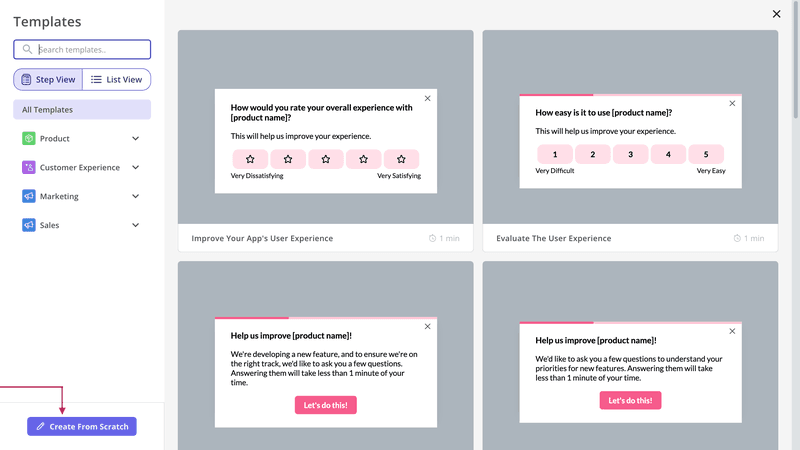
- Resource centers: Our resource centers function as self-serve support hubs within your application. Users can access help articles, video tutorials, and FAQs on demand, significantly reducing the load on your support team. This aligns perfectly with the self-service support model many SaaS companies are adopting, enhancing the overall user experience without needing constant human intervention.
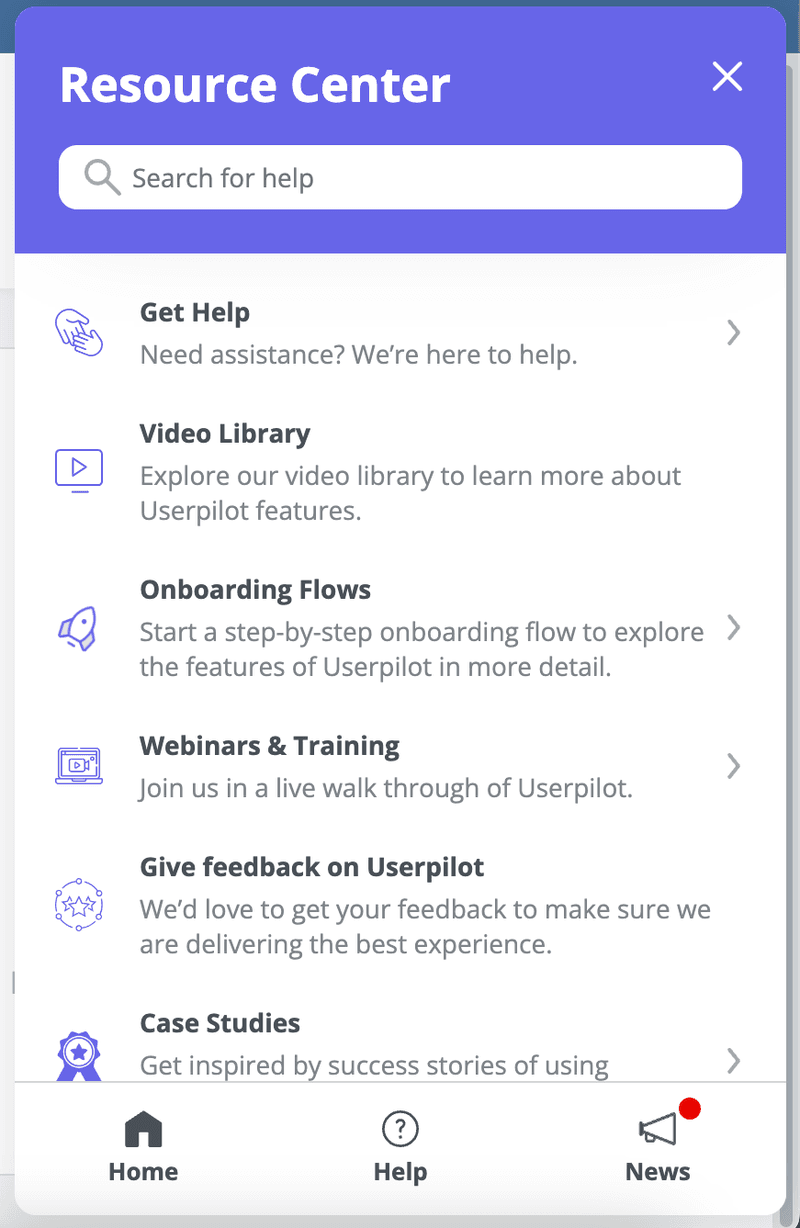
- Mobile engagement: Userpilot enables us to run interactive surveys and walkthroughs natively on mobile apps, along with mobile-specific experiences like push notifications and carousels to engage users where they are. Mobile capabilities are included as an add-on to the Growth plan, rather than being sold as a completely separate product, like in the case of Whatfix. This simplifies your tech stack and keeps all engagement data unified.
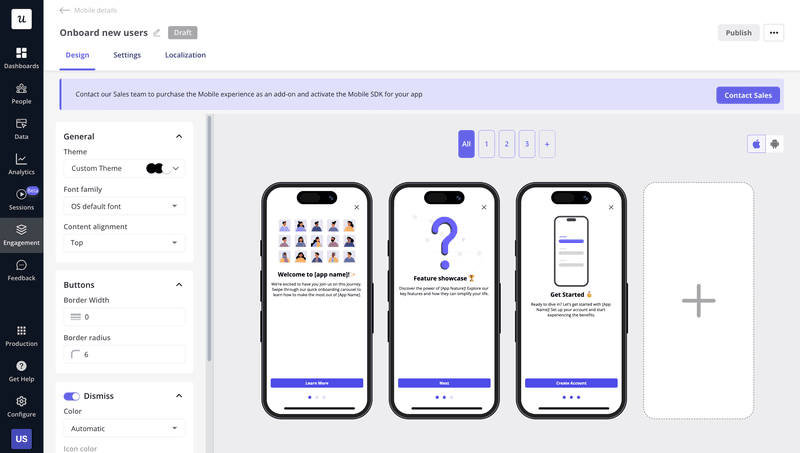
- Email campaigns: Reaching disengaged users requires going beyond in-app touchpoints. Userpilot offers integrated email marketing capabilities for nurturing prospects and re-engaging dormant accounts. Whatfix doesn’t provide this feature at all. Having emails in the same platform as your in-app experiences and user data allows you to create cohesive, omnichannel workflows with detailed user segments and triggers.
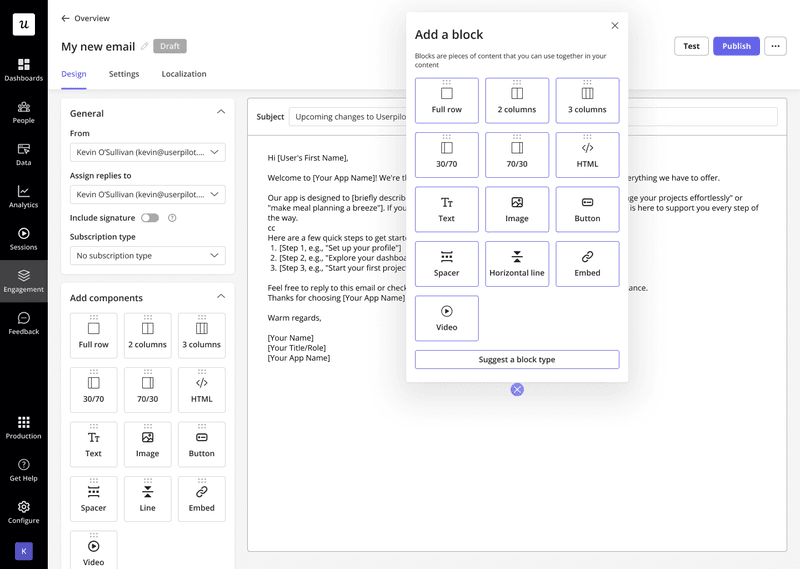
Complete product analytics for actionable insights
Userpilot is not just about building experiences. It helps you precisely measure their impact.
Our analytics engine provides detailed insights into user behavior, flow performance, and feature adoption. You can easily track product analytics metrics, identify funnel drop-offs with funnel analysis, and understand user journeys with path analysis.
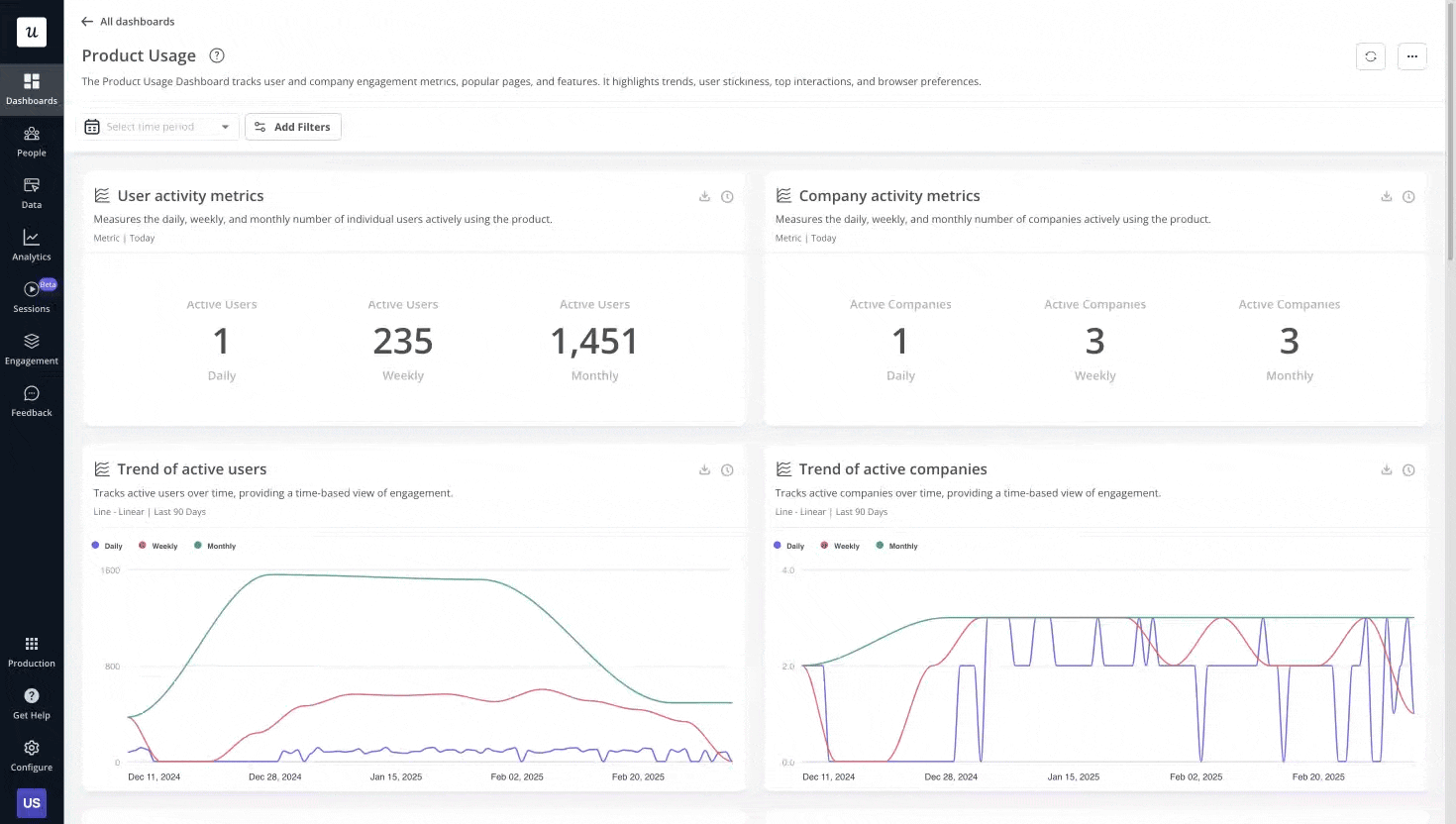
You can create custom dashboards to visualize the data most critical to your team. While Whatfix offers a separate product for advanced analytics, Userpilot’s integrated engine provides robust, actionable insights directly relevant to PMs.
For even deeper insights, our session replay feature allows you to watch precisely how users interact with your product, helping you identify user frustration and pinpoint areas for improvement.
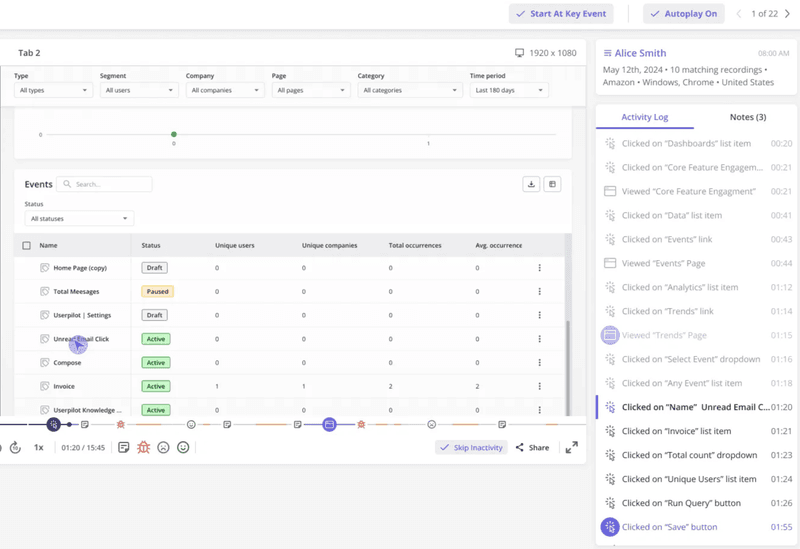
Deep personalization and user segmentation
Generic experiences rarely yield optimal results. Userpilot empowers you to create hyper-personalized experiences by segmenting customers based on user properties, company data, or in-app behavior. Our content personalization features allow you to insert dynamic variables like a user’s name directly into your flows and messages.
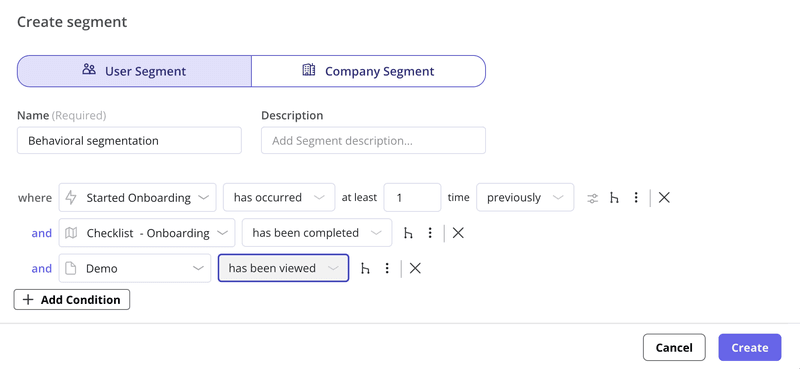
This is important for delivering personalized onboarding and ensuring each user receives the most relevant guidance possible. Employing customer segmentation strategies helps you deliver the right message to the right user at the right time.
Benefiting from transparent and predictable pricing
Userpilot has transparent pricing. We offer MAU-based plans that scale predictably, simplifying budgeting for businesses of all sizes. This transparency is invaluable for product managers, enabling clear ROI calculations and ensuring no hidden costs derail your project.
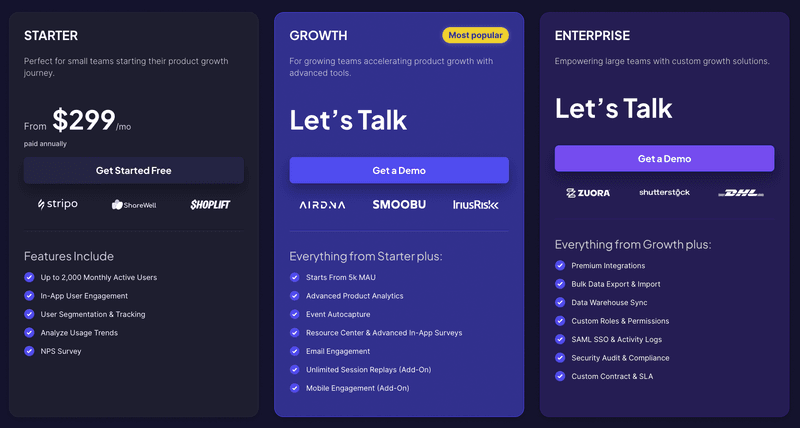
Plus, we offer a genuine free trial, so you can test our capabilities without commitment or the need for a sales conversation just to see a price. While enterprise software is often priced opaquely, Userpilot’s approach builds trust and allows teams to make informed decisions confidently, aligning perfectly with a product-led growth philosophy.
What do users say about Userpilot? Userpilot reviews
If you look at Userpilot reviews on G2, they highlight three areas where users see tangible value:
- Implementation speed.
- Team independence.
- Analytics depth.
With 350+ mentions praising ease of use, reviewers consistently note they can launch their first experiences within days instead of months, and non-technical team members can build flows independently after minimal training.
Userpilot’s customer support quality has also been praised for responsiveness and solving implementation challenges quickly, helping teams maintain momentum.
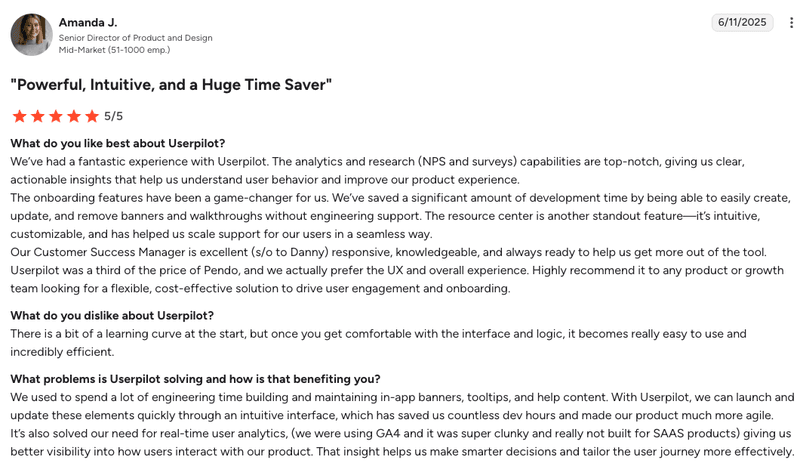
What stands out in user feedback is the specific outcomes product managers and marketers describe achieving: converting trial accounts to paid subscriptions, reducing support loads through self-serve resources, and understanding exactly where users drop off in their journeys.
All without depending on engineering resources for every iteration. That’s the kind of operational reality that matters when you’re evaluating tools that will impact your team’s velocity and your product’s growth trajectory.
Choosing the best digital adoption platform for your specific needs
Choosing a digital adoption platform is a significant decision. While Whatfix offers advanced features and robust enterprise-level support, its high cost, technical learning curve, and lack of pricing transparency are major roadblocks for many organizations.
For product teams that prioritize speed, ease of use, and the ability to iterate quickly without developer dependency, a tool like Userpilot offers a compelling alternative. Our no-code platform empowers product managers and growth teams to build, personalize, and measure in-app experiences across web and mobile, driving user adoption and retention efficiently.
Ultimately, the best tool is the one that precisely fits your specific needs, budget, and team capabilities. Whatfix excels in highly complex, enterprise environments where deep customization and dedicated technical resources are available. However, if you’re looking for a solution that truly puts power in the hands of product teams, fosters rapid iteration, and offers transparent value, I believe Userpilot is an excellent choice to consider for optimizing your user onboarding and overall product experience.
Ready to explore a more accessible approach to digital adoption? Book a demo with Userpilot and experience how our no-code platform can help your team drive user engagement and product growth without the complexity required by traditional enterprise solutions.

